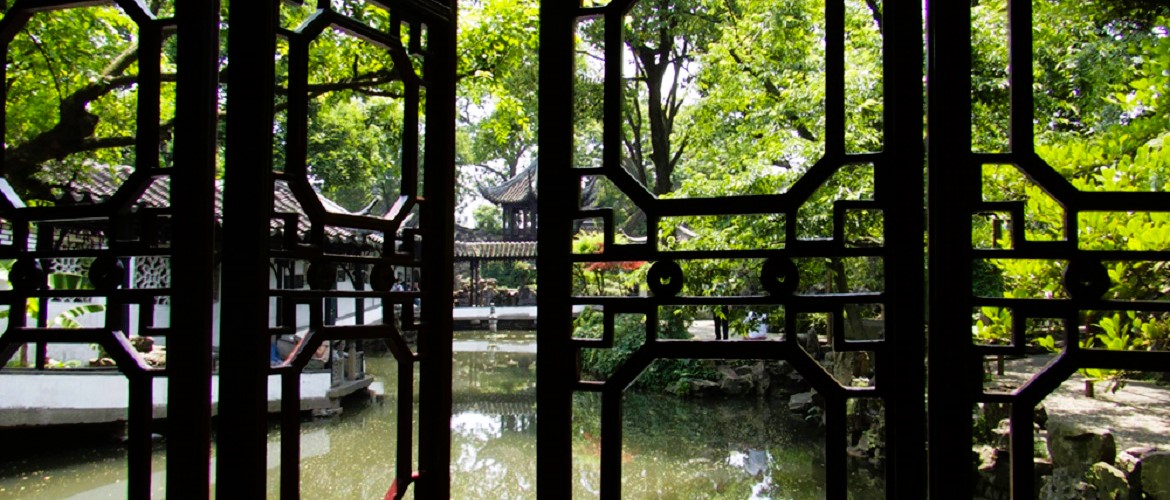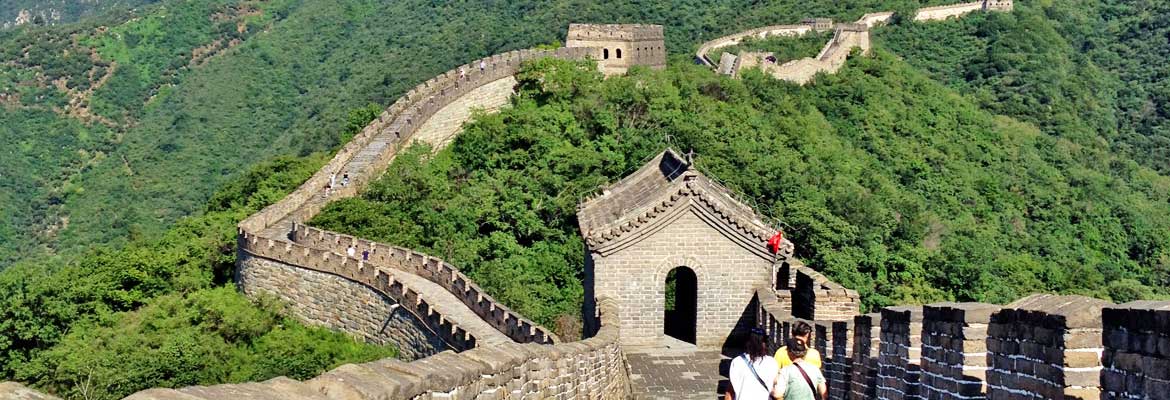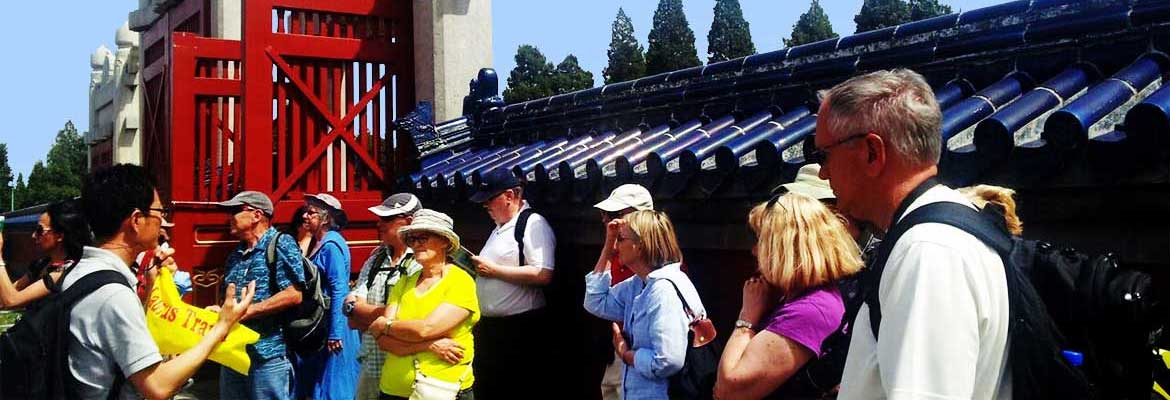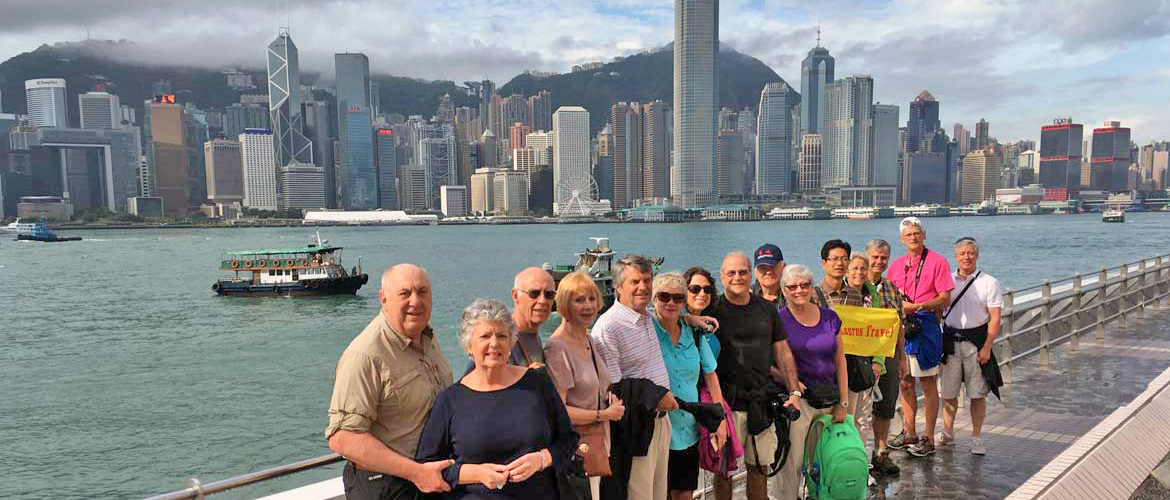If you are going on China tours from Florida, it means you’d have to go to a major city on the East Coast or West Coast to connect China-bound flights because there are no direct flights available between Florida and China.
Very often, residents from Florida would travel to New York or Chicago to board flights bound for China (Hong Kong, Shanghai, Beijing). This definitely makes it more expensive for residents from Florida to travel to China. However, if you choose Laurus Travel as your China tour company, you can count on us for reliable guidance to track down the best air deals. This is especially true if you would like to fly business class or premium economy. American and Delta airlines are our preferred air carriers but we can also good business class deals on other carriers including United, Air Canada, Cathay Pacific and a number of Asian airlines.
Laurus Travel is a reputable China tour operator with a proud history dating back to 1998. Our luxury small-group tours of China have been extremely popular among wealthy seniors who care about quality and are interested in history, culture, fine food and meaningful interactions with locals.
Consistently rated A+ by the Better Business Bureau, Laurus Travel has been recommended in every edition of Frommer’s China, an endorsement that money can’t buy. In addition, you can find a large number of customer reviews on our China tours all over the Internet including reviews by residents from Florida.
 Our China tours feature expert local guides, small group size, high-speed train for inter-city travel, luxury accommodations and fine food. We have a strict “no shopping stops” policy and the ability to enforce it, a feat we are particularly proud of. Our China tours are offered as land packages without international airfare. However, international flights can be easily added to the China tour package on request.
Our China tours feature expert local guides, small group size, high-speed train for inter-city travel, luxury accommodations and fine food. We have a strict “no shopping stops” policy and the ability to enforce it, a feat we are particularly proud of. Our China tours are offered as land packages without international airfare. However, international flights can be easily added to the China tour package on request.
Check out our current China tours
|
A Most Splendid Tour! That unequivocally justifies the duration with most of the best of the best sights to be seen and then some. Who wants to get temporary jet lag after a long flight for anything less? All the Must Sees are included – the Great Wall, Forbidden City, Temple of Heaven, Summer Palace in Beijing, the Terracotta Warriors in Xian, the Pandas in Chengdu, the Yangtze River Cruise, the Goddess Stream, the Li River cruise, Shanghai and Hong Kong. What is also experienced and arguably more authentic is that “and then some:” Suzhou and its IM Pei Museum, Tongli Watertown, The Confucius UNESCO sight in Qufu, the Closing of the Gates “ceremony” in Qufu, the Grand Mosque & Muslim Bazaar in Xi’an, watching “ear cleanings” whilst sipping tea in Wangjianglou Park, the Terraced Rice Fields & Local Village at Lonji, seeing real Tea bushes (you’ll get a hand at picking some), a Silk making Facility in action etc. And FUN & Flashy Shows (Tang Dynasty, Face Mask Changing, Peking Opera) as well as Huangpu Night River Cruise in Shanghai & the Four Lakes Night Cruise in Guilin. Spectacular is the Hubei Museum with its artifacts from the Tomb of the Marquis Yi of Zeng in Wuhan (from ~ 2,400 years ago) with its Bronze Chime bells and hearing a Concert the same morning utilizing replicas of the same. All in all “Awesome.” And all by bullet train instead of intra-China flights. An additional if unheralded bonus experience. Couple that with an extraordinary Tour Leader (Jacob) and superb Local Guides such as Steven, Howard, Paul & David who add immeasurably to the fun and experience. Hotels were Excellent in Quality/ Location and often BOTH. (The Shangri-La Hotel in Qufu = a Wow!) BTW, the home office in Vancouver is friendly, most helpful, honest and certainly attentive to detail. Would the wife and I use Laurus Travel again? – most certainly. Albert N. M.D. |
Shanghai – Suzhou – Tongli – Qufu – Beijing – Xi’an – Chengdu – Chongqing – Yangtze Cruise – Yichang – Wuhan – Guilin – Hong Kong
Embark on this luxury China tour by train through the heart of China, where ancient traditions harmonize with cutting-edge modernity, and each city tells a tale woven into the fabric of a nation steeped in history. This leisurely placed grand tour of China is a captivating journey that transcends time, offering an immersive experience that showcases the best of China’s cultural heritage, breathtaking landscapes, and dynamic urban centers.
On this fully guided small-group adventure, you’ll travel between the cities exclusively by high-speed train, thus eliminating air travel-related hassles. Travelling by train also allows you to see the countryside and mingle with locals.
Important Features
- Small group size – average 15, maximum 20
- Expert guides handpicked by company owners
- Inter-city travel exclusively by high-speed train
- No annoying forced shopping stops
- Quality meals at non-tourist restaurants
- Unlimited supply of bottled water during group activities
- Outside cabin on or above bridge deck for Yangtze cruise
- Complimentary Wi-Fi on cruise ship and in all hotels
- Visit to chambers in Forbidden City that most tour operators leave out
- Great Wall visit at Mutianyu including cable car rides
- Day hike at Longji terraced rice fields
Options Available
- Peking Opera show with dinner in Beijing
- Tang Dynasty cultural show with dinner in Xi’an
- Traditional face mask changing performance with dinner in Chengdu
- Half-day immersive tea farm visit in Guilin
Meal Code: B = breakfast / L = lunch / D = dinner

Day 1/Thu: Departing for Shanghai
Depart from a city of your choice and lose a day upon crossing the International Date Line.
Day 2/Fri: Arrival in Shanghai
Meet the driver on arrival for transfer to the hotel. You’ll have the balance of the day at leisure. The guide will get in touch with you tonight.
Day 3/Sat: Shanghai (B/L/D)
With a population of 24.9 million (2021), Shanghai is China’s biggest city, which delights the visitor with its futuristic skyline and historical landmarks.
Following the tour orientation we visit Jade Buddha Temple located in an old neighbourhood, the famous waterfront promenade known as the Bund, and the Yu Garden in the old town centre. We wrap up the day with a drive through the glitzy financial district of Lujiazui on the opposite side of the Bund across Huangpu River.
Day 4/Sun: Shanghai (B)
Free day to explore on your own. We recommend Shanghai Museum and the Urban Planning Exhibition Center nearby. Shanghai Museum is frequently cited by visitors as one of the best of its kind in China, it is also a great place to explore on your own.
Day 5/Mon: Shanghai – Suzhou (B/L)
After a leisurely breakfast we drive 85 km to Suzhou. Ancient Suzhou is most famous for its gardens, canals and silk industry. In the late 13th century a Venetian named Marco Polo visited Suzhou and was very impressed by what he saw. He vividly described the prosperous silk industry and dubbed Suzhou “Venice of the East” due to the small waterways crisscrossing the city.
Our full-day schedule takes in historic Tiger Hill, Humble Administrator’s Garden, Suzhou Museum (designed by I. M. Pei), North Pagoda and a short canal cruise. Those interested in shopping can ask to be dropped off at the Silk Embroidery Research Institute or a filature (silk reeling mill) on the way back to the hotel.
Day 6/Tue: Suzhou – Tongli – Suzhou (B/L)
We set off for Tongli following breakfast. Located 25 km south of Suzhou, ancient Tongli is renowned for its canal system intersecting the town. After lunch we return to Suzhou and have the remainder of the day at leisure.
Day 7/Wed: Suzhou – Qufu (B/L/D)
This morning we board the bullet train for Qufu (3 ½ hours). Qufu is the hometown of Confucius (551-479 BCE), who lived around the same time as Siddhartha Gautama (the Buddha) and Cyrus the Great of Persia. His teachings collectively known as Confucianism have played and continue to play a vital role in the evolution of Chinese civilization.
In the afternoon we tour the massive Confucius Temple which features a series of impressive gateways, clusters of twisted pines and cypresses, inscribed steles and tortoise tablets recording ancient events.
Day 8/Thu: Qufu (B/L)
We begin our sightseeing this morning at the mansion once inhabited by the descendants of Confucius. We then proceed to Confucius Forest – the last resting place of Confucius and a cemetery for his descendants. The cemetery, the residence and the temple together form the UNESCO designated World Heritage Site in Qufu. If time allows, we will visit a village nearby.
Day 9/Fri: Qufu – Beijing (B/L)
We spend the morning exploring the small town on our own. After lunch we ride the bullet train to Beijing (80 minutes) and transfer to the hotel on arrival.
The capital of China, Beijing is a world-class cultural and educational centre with a population of 21.9 million (2020), ranking it China’s second biggest city behind Shanghai. Beijing is renowned for its opulent palaces, temples, and huge stone walls and gates – treasures that make it the most popular tourist city in China by the number of visitors it receives every year.
Beijing was already a strategically important city in northern China for centuries when Kublai Khan (1215-1294) decided to move his capital here from Karakorum in Mongolia. With the collapse of the vast Mongol empire in 1368, Beijing, known as Da Du or Grand Capital at the time, lost its status as the country’s capital but regained it in 1420 when the imperial court of the successive Ming Dynasty moved here from Nanjing. Beijing continued to serve as China’s capital after Manchu tribes dethroned the last emperor of the Ming Dynasty in 1644 and established the Great Qing Empire (Qing Dynasty), which lasted until 1912.
Afternoon sightseeing in Beijing takes in Lama Temple and Guozijian (imperial academy). Lama Temple, commonly known as Yonghe Temple among locals, was built in 1694 as residence of Prince Yong (Yinzhen), one of the sons of Emperor Kangxi. After Prince Yong ascended the throne as Emperor Yongzheng in 1722, half of his former residence was turned into a lamasery – a monastery for monks of Tibetan Buddhism. Guozijian was the highest institute of learning in China’s traditional educational system during the Yuan, Ming and Qing dynasties. One of its main functions was assisting the imperial court in administering national examinations.
Day 10/Sat: Beijing (B/L/D)
We begin our sightseeing today at the Forbidden City. Officially known as the Palace Museum, the Forbidden City was the place where the emperors of the Ming (1368-1644) and Qing (1644-1912) dynasties lived and carried out their administration. Construction of the Forbidden City took 14 years (1406-1420) to complete. The complex consists of 980 buildings and covers 72 hectares or 180 acres. It exemplifies traditional Chinese palatial architecture and has influenced cultural and architectural developments in East Asia and elsewhere.
Tian’anmen Square comes next. Located in the heart of Beijing, the square measures 880 metres from north to south and 500 meters from east to west. Said to be the largest public plaza in the world, Tian’anmen Square has the capacity to hold one million people. The imposing Tian’anmen Tower sits at the north end of the square while the Monument to the People’s Heroes dominates the centre. The square is flanked by The Great Hall of the People (west) and the National Museum (east). Chairman Mao’s Mausoleum and Qianmen (Front Gate) are located in the south of the square.
Afternoon sightseeing takes place at the Temple of Heaven. Situated in southeastern Beijing, the Temple of Heaven is China’s largest extant sacrificial temple where, during the Ming and Qing Dynasties, the emperors conducted the elaborate and most exalted sacrifices addressed to “the Supreme Ruler of the Universe.” Construction of the temple started in 1406, during the reign of the Ming Emperor Yongle, and took 14 years to complete. The temple was expanded under the Qing emperors Qianlong (1736-1796) and Jiaqing (1796-1820). Occupying 2.73 square kilometres (roughly 1,700 by 1,600 metres), the area of the Temple of Heaven is more than twice that of the Forbidden City.
The famous Hongqiao Pearl Market, the largest pearl market in the world, is right across the street from the Temple of Heaven. Recommended by numerous guidebooks for freshwater pearls, Hongqiao teems with domestic and international shoppers. If you are interested, please ask the guide to drop you off there. However, you’ll need to get back to the hotel by taxi, which costs less than 10 US dollars.
Today we enjoy a delicious dinner at a popular Peking Roast Duck restaurant. Peking Roast Duck is a famous Beijing dish prized for the thin and crispy skin with authentic versions serving mostly the skin and little meat, sliced in front of the diners. The meat is wrapped in a thin layer of pancake (Chinese tortilla) together with shredded scallion, cucumber, and a sweet and salty sauce made of wheat flour. Condiments may also include pickled garlic and white sugar.
Day 11/Sun: Beijing (B/L)
After an early breakfast we embark on a full-day excursion to the legendary Great Wall at Mutianyu, 75 km northeast of the city.
Zigzagging over 6,000 kilometres from east to west along undulating mountains, the Great Wall was built to hold off tribal invaders from the north. As history shows, the Wall failed the Chinese rulers miserably, especially in the case of Kublai Khan whose cavalrymen swept across China from the Mongolian steppe, thus the beginning of the Yuan Dynasty (1279-1368).
Construction of the earliest sections of the Wall started in the 7th century BCE. A major renovation started with the founding of the Ming Dynasty in 1368 and took 200 years to complete. The wall we see today in Beijing is almost exactly the result of this effort.
[ read more ]



